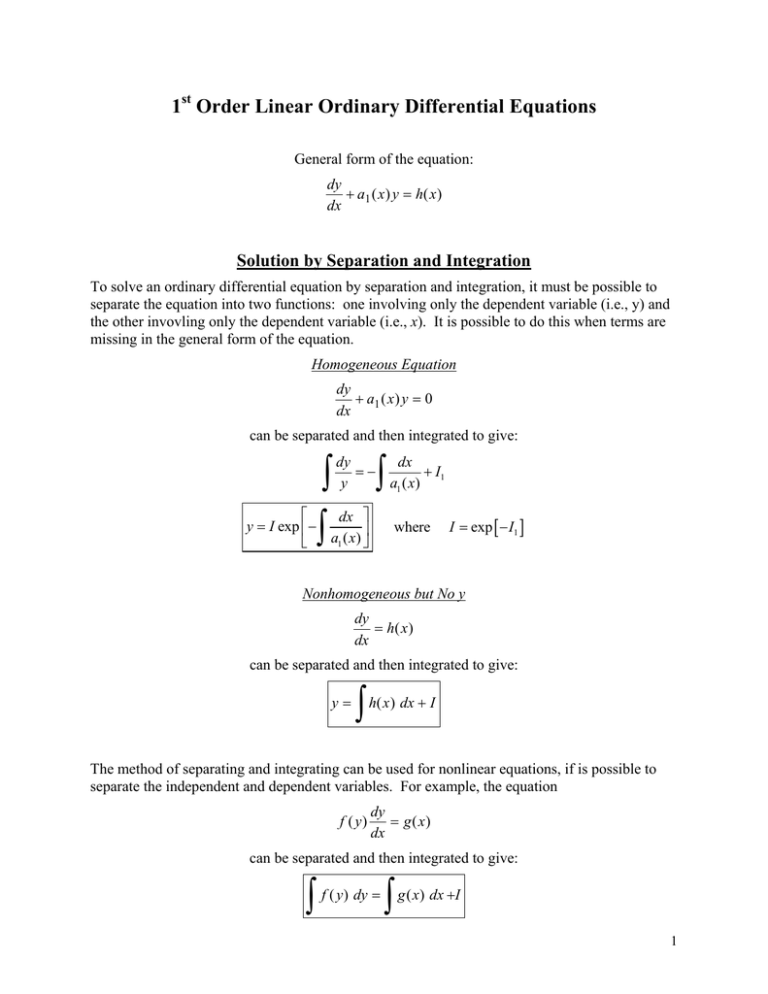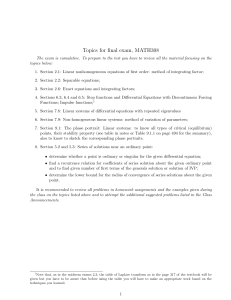1 Order Linear Ordinary Differential Equations
advertisement

1st Order Linear Ordinary Differential Equations General form of the equation: dy + a1 ( x ) y = h( x ) dx Solution by Separation and Integration To solve an ordinary differential equation by separation and integration, it must be possible to separate the equation into two functions: one involving only the dependent variable (i.e., y) and the other invovling only the dependent variable (i.e., x). It is possible to do this when terms are missing in the general form of the equation. Homogeneous Equation dy + a1 ( x ) y = 0 dx can be separated and then integrated to give: ∫ ∫ ⎡ dx ⎤ y = I exp ⎢ − ⎥ ⎣ ∫ a ( x) ⎦ dy dx =− + I1 y a1 ( x) where I = exp [ − I1 ] 1 Nonhomogeneous but No y dy = h( x ) dx z can be separated and then integrated to give: y= h( x ) dx + I The method of separating and integrating can be used for nonlinear equations, if is possible to separate the independent and dependent variables. For example, the equation f ( y) dy = g( x) dx can be separated and then integrated to give: ∫ f ( y ) dy = ∫ g ( x) dx +I 1 Solution by Integrating Factors If the first order differential equation is in the general form with no terms missing, then it will not be possible to solve the problem by separating and integrating. In this case, the method of "Integrating Factors" can be used. The solution to the general 1st order linear ordinary differential equation, dy + a1 ( x ) y = h( x ) dx is the following: y= ∫ ⎤ 1 ⎡ ⎢ h( x) F ( x) dx + I ⎥ F ( x) ⎣⎢ ⎦⎥ ∫ ⎡ ⎤ where F ( x) = exp ⎢ a1 ( x) dx ⎥ ⎢⎣ ⎥⎦ 2



